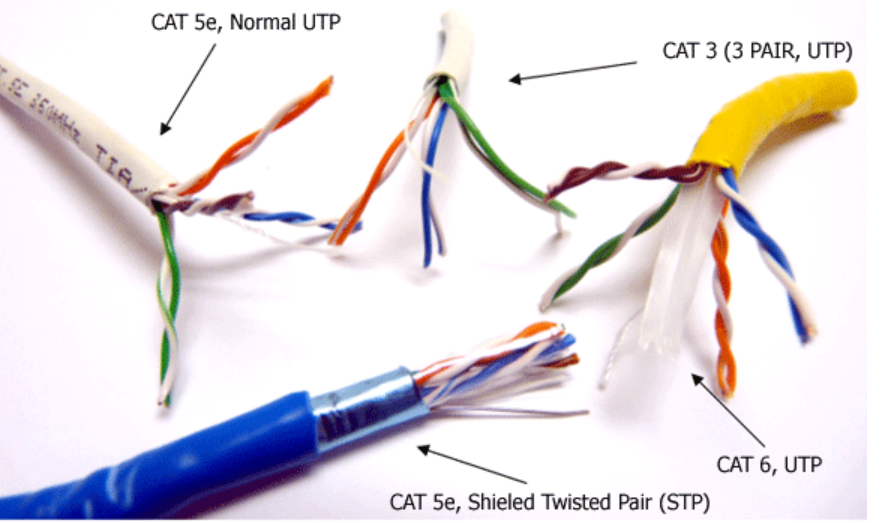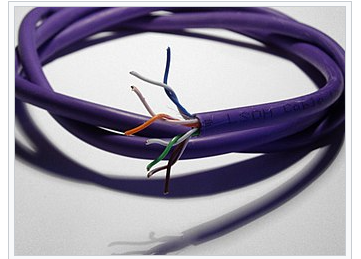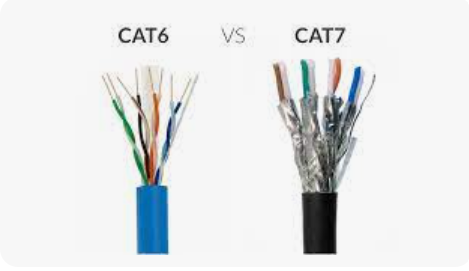Ethernet cables are a type of cable used for networking devices, and they are the most commonly used cables for transferring data between computers and other devices using a wired connection. There are different types of Ethernet cables available on the market, each with its own characteristics, uses, and differences. In this blog, we will discuss the types of Ethernet cables, their differences, and their uses.

- Cat5 Ethernet Cable:
Cat5 Ethernet cables are the oldest type of Ethernet cable and are capable of transmitting data at speeds up to 100 Mbps. These cables have four twisted pairs of wires, and they are used for basic network connections in home and office environments.

- Cat5e Ethernet Cable:
Cat5e Ethernet cables are an improved version of Cat5 cables and can transmit data at speeds up to 1000 Mbps (1 Gbps). These cables have the same four twisted pairs of wires as Cat5 cables, but they are designed to reduce crosstalk between wires, providing better signal quality and higher data transfer speeds. Cat5e cables are widely used for both home and office networks.

- Cat6 Ethernet Cable:
Cat6 Ethernet cables are an upgraded version of Cat5e cables and can transmit data at speeds up to 10 Gbps. These cables have the same four twisted pairs of wires as Cat5e cables, but they are designed with better insulation and tighter twists, reducing crosstalk and providing better signal quality. Cat6 cables are widely used in data centers and other high-speed network applications.
- Cat6a Ethernet Cable:
Cat6a Ethernet cables are an improved version of Cat6 cables and can transmit data at speeds up to 10 Gbps over longer distances. These cables have a thicker and more tightly twisted design than Cat6 cables, reducing crosstalk and providing better signal quality. Cat6a cables are used in data centers, high-speed network applications, and home or office networks where high-speed data transfer is required over longer distances.

- Cat7 Ethernet Cable:
Cat7 Ethernet cables are the latest and most advanced type of Ethernet cable and can transmit data at speeds up to 10 Gbps over a distance of 100 meters. These cables have four individually shielded pairs of wires, providing better signal quality and reducing crosstalk. Cat7 cables are designed for high-speed network applications in data centers, server rooms, and other high-performance network environments.
Advantages and Disadvantages of Cat cables:
- Category 5 (Cat5) Cable Cat5 cable is the most basic type of ethernet cable and is suitable for most home networks. It has a maximum bandwidth of 100 Mbps and a range of up to 100 meters. Its main advantages are that it is inexpensive and widely available. However, it is not suitable for high-speed data transfer and may not be sufficient for larger networks.
- Category 5e (Cat5e) Cable Cat5e cable is an improvement over Cat5 cable and has a maximum bandwidth of 1 Gbps. It also has improved resistance to interference and crosstalk. Its main advantage is that it is inexpensive and widely available. However, it is still not suitable for high-speed data transfer over long distances.
- Category 6 (Cat6) Cable Cat6 cable has a maximum bandwidth of 10 Gbps and is suitable for high-speed data transfer over longer distances. It also has improved resistance to interference and crosstalk. Its main advantage is that it can support higher data transfer rates than Cat5 and Cat5e cables. However, it is more expensive and less widely available.
- Category 6a (Cat6a) Cable Cat6a cable is an improvement over Cat6 cable and has a maximum bandwidth of 10 Gbps over longer distances. It also has improved resistance to interference and crosstalk. Its main advantage is that it can support higher data transfer rates over longer distances than Cat6 cable. However, it is more expensive and less widely available.
- Category 7 (Cat7) Cable Cat7 cable is the most advanced type of ethernet cable and has a maximum bandwidth of 10 Gbps over longer distances. It also has improved resistance to interference and crosstalk. Its main advantage is that it can support higher data transfer rates than all other types of ethernet cables. However, it is the most expensive and least widely available type of ethernet cable.
In conclusion, Ethernet cables are essential for establishing a wired network connection between devices. The type of Ethernet cable you choose will depend on your specific requirements, including data transfer speed, distance, and the environment in which the cable will be used. Cat5 and Cat5e cables are suitable for basic home and office networks, while Cat6 and Cat6a cables are ideal for high-speed data transfer in data centers and other high-performance network environments. Cat7 cables are the latest and most advanced type of Ethernet cable, providing the highest data transfer speeds and signal quality.
